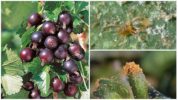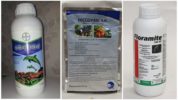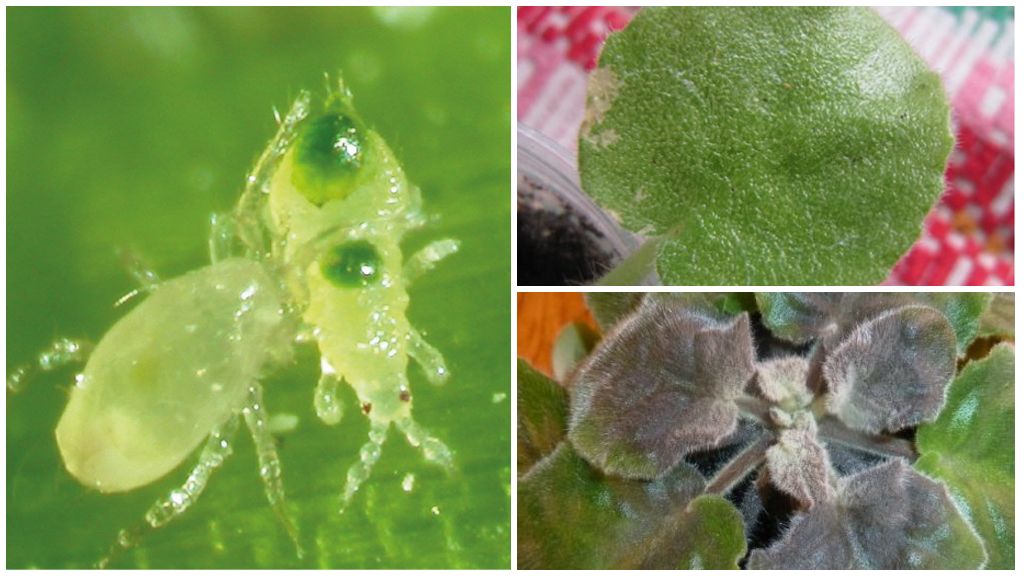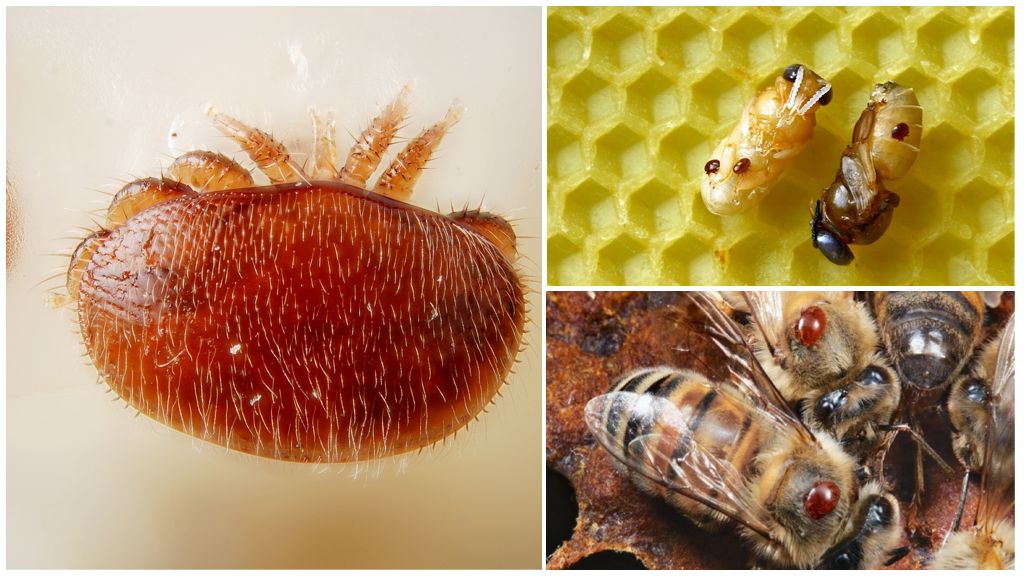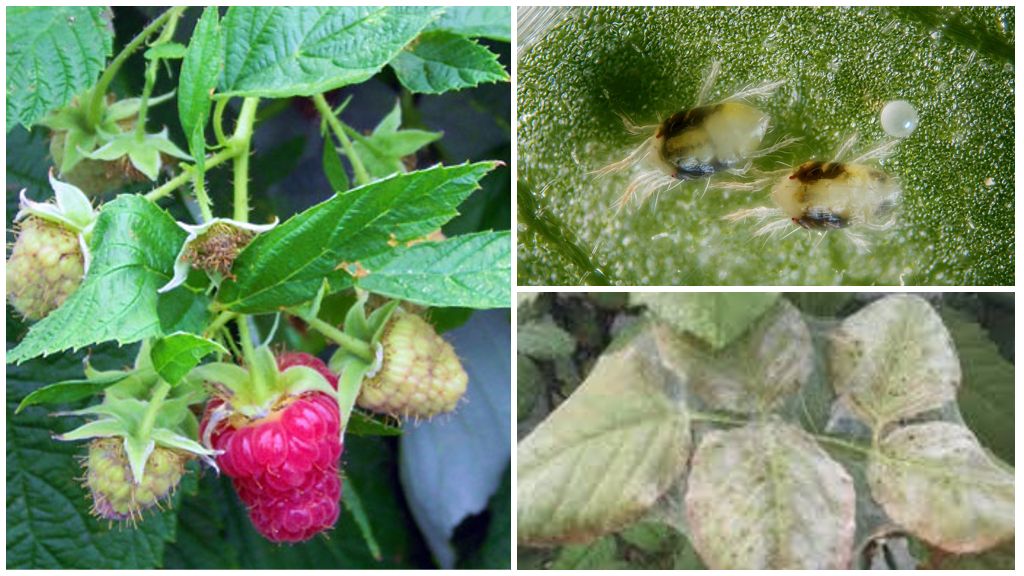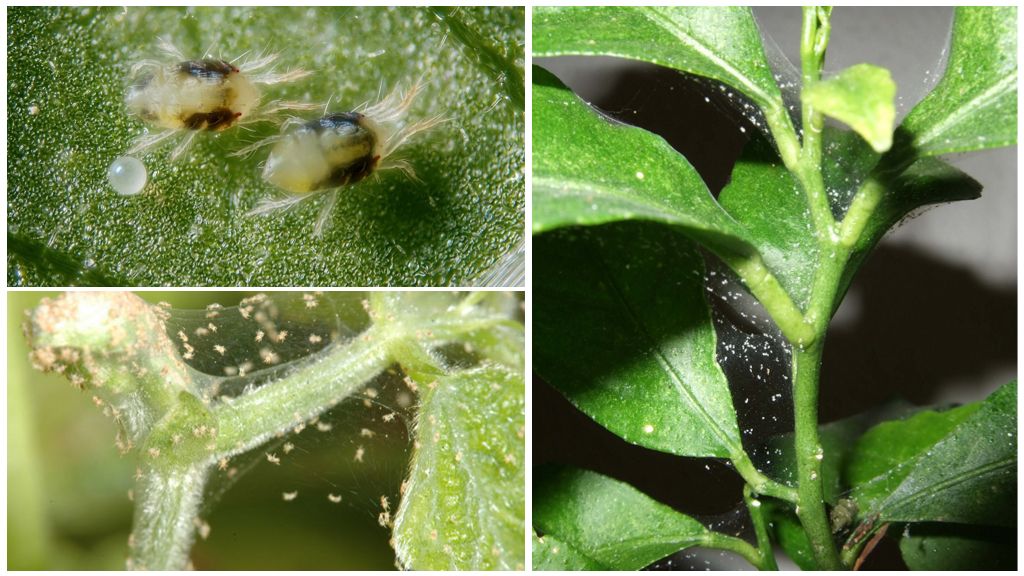- Spider mite on currant
- Spider Mite Drugs
- Popular ways to combat the spider mite
Spider mites very resistant to various treatments, able to remain alive in the soil. The appearance of parasites on the plant before the formation of the ovaries means loss of crop. The tick is able to completely destroy the currant bush if it multiplies in large quantities. The mass of "miraculous" folk methods of how to deal with a spider mite on currants convincingly proves that this arthropod is almost impossible to "cure".
Signs of infection
Infection usually begins on the underside of the leaves. Ticks multiply rapidly, covering the branches of currant with cobwebs. Gradually, the pest can capture the entire bush. A photo of a spider mite on a currant looks the same as a similar photo of this pest on any other plant: a spider web on branches and speckled leaves. Due to its small size, only a professional photographer who is fluent in macro photography can fix problems on the culprit.
On a note!
Due to the fact that the tick pierces the foliage and drinks juices, the damaged areas dry out, changing color to white. With a large amount of pest, all the foliage on the currant bush becomes spotty.
How to get rid of a tick
The fight against spider mites on currants and other plants is a fascinating activity not only for gardeners, but also for lovers of indoor plants. It does not work out completely even from the apartment. Ticks are able to hide in the soil. This is especially true of gardens and kitchen gardens, where it is impossible to completely replace the soil.
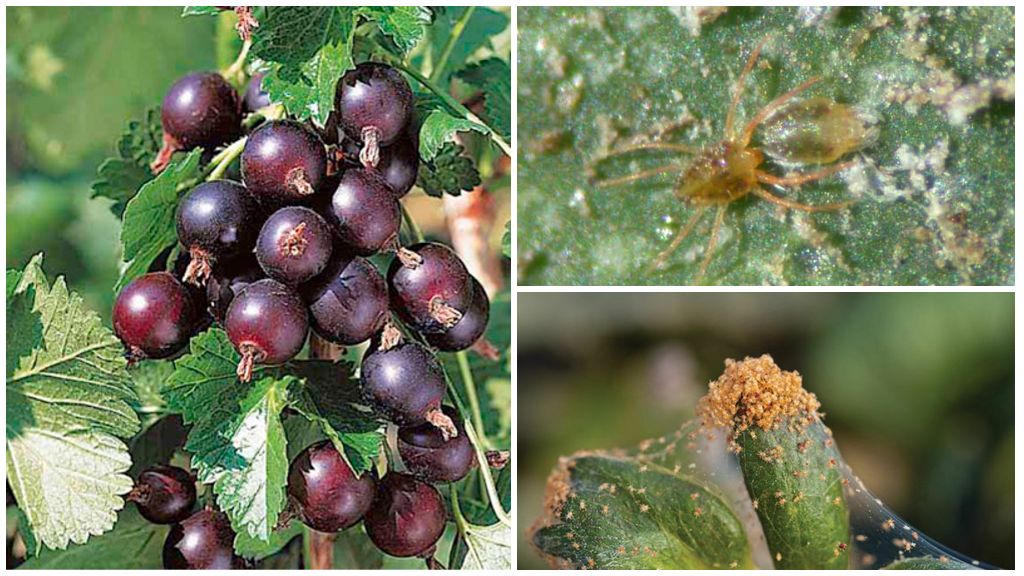
Folk methods help control the population, but do not completely destroy the pest. Chemical acaricides also not all work 100%. Phosphorus-based acaricides are considered the most effective according to reviews by gardeners. However, these are very toxic preparations and it is undesirable to use them on fruit crops during the ripening of the crop. But such potent drugs can be used until the ovaries appear on the currant.
Chemical acaricides
It is advisable to use these drugs on currants until flowers bloom on it. Flowering time is the most dangerous in terms of crop loss. A tick-weakened plant will not produce fruit. Later, when the currant ripens, it will be possible to fight against the tick with folk remedies, not destroying, but reducing the population.
Of phosphoric acaricides on currants BI 58 and Actellik. Use these pesticides only in open areas due to toxicity and odor.
In addition to phosphoric acaricides against spider mites, Avermectin B1-based products can be used:
- Marshmallows;
- Abacus;
- Vertimek.
Avermectin is the most harmless chemical preparation that can be processed currants even during the ripening of the crop. This substance is often used to protect pets from parasites.
The avermectin group also allegedly biological drug Fitoverm based on aversectin C.
Feedback
I use avermective preparations. Last time I bought Vertimek. Chemistry doesn’t scare me after my puppies devoured antifleas with aversectin and they didn’t even have an intestinal upset.But these funds from spider mites help very well. And they can be used not only in the garden, but also in the apartment.
Elizabeth, Mariupol
More toxic drugs traditionally used at the stage of bud formation to protect currants from spider mites:
- Oberon;
- Tick-borne;
- Anikleshch;
- Nissoran;
- Floromite;
- Apollo
- Flumayt;
- Saynmayt.
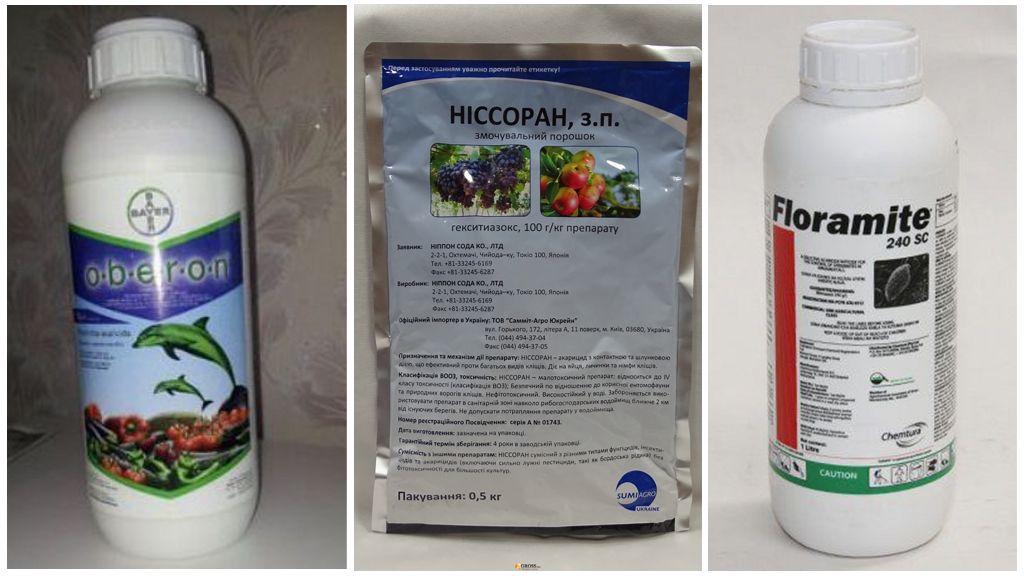
All remedies work well at the "living" stages of the pest. They destroy larvae, nymphs and adults, but do not affect eggs. Because of this, processing must be carried out 3 times. All drugs are used according to the instructions that accompany the pesticide.
Important!
The spider mite gains resistance to poisons. If the pest has not died out from one of the types of acaricides, you need to change the active substance in the treatment agent.
Biological products
Biological preparations are means from a spider mite based on bacteria that penetrate the gastrointestinal tract of the pest. But its "relatives" - predators are more effective. Natural enemies of arachnoid herbivorous parasites are predatory mites:
- Phytoseiulus persimilis;
- Neoseiulus californicus;
- genus Amblyseius;
- family Phytoseiidae.
Species Phytoseiulus persimilis eats exclusively cobweb "brethren." You can buy predators in flower shops. The "dose" is designed for home plants and for the bush of currant will need several packages.
On a note!
It is expensive for money, but it allows you to get rid of the hassle of processing currants. And the safest for people. Predatory arthropods are simply released onto the currant bushes. Then they will do all the work themselves.
Folk ways
Folk ways better help with combating spider mites on indoor plants. In the garden, they are ineffective, since the gardener does not have the opportunity to process each leaf of currant or other infected plant. Of the compositions for spraying are traditionally used:
- laundry soap solution;
- infusion of ash;
- infusion of potato tops;
- infusion of garlic or onion.
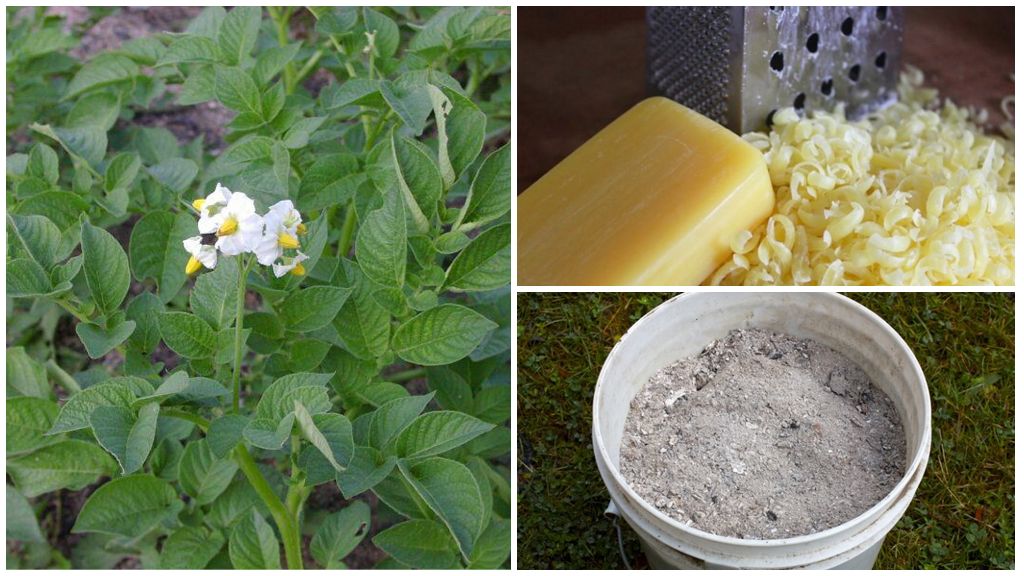
The recipes for these products are standard:
- 200 g of laundry soap is dissolved in a bucket of water. Sprayed not only foliage, but also the ground.
- 300 g of wood ash is infused in a bucket of water. Filter the infusion and spray the foliage. They also spill the ground under a bush of currant. If you need to be careful with soap: a large amount of soap will kill the roots, then with ash you can not worry about it.
- The head of garlic is crushed and insisted in 1 liter of water for a week. 50 g of infusion is added to 10 l of water.
- 200 g of onion husks are poured with a bucket of hot water and insisted for a day. Filter and use for spraying.
- 1 kg of fresh potato or tomato tops is ground and poured with a bucket of hot water. Insist 3-4 hours.
All these tools require constant treatment of plants every 3 days.
Feedback
I tried to spray currants from ticks with a soap solution. It seems they do not know that he should be afraid. The next time I use chemicals right away in early summer. Fuss less, but more sense.
Alena, Stavropol
Other methods of struggle
They are based on the biology of the tick and can not be called folk or chemical. The spider mite does not like high humidity and dies at 80%. At the beginning of the invasion, the currant bush is sprayed with water and covered with a film to create high humidity. This is a fairly successful way of fighting, but there will always be several individuals who do not fall within the range of the film. They will quickly restore the population, as the female lays up to 200 eggs per day.
On a note!
Near the currant, you can plant repelling pests of plants: calendula, garlic, dill, wormwood, celandine and others.
To reduce the pest population in the fall and spring, preventive measures are taken:
- if the bush was damaged by a tick, in the fall they cut off the upper part of the branches, on which pests accumulate, they will leave for wintering ground only with frost;
- remove fallen leaves;
- dig the ground in the fall and spring.
All these measures do not eliminate the threat, but significantly reduce the chances of infecting the currant with a spider mite.
